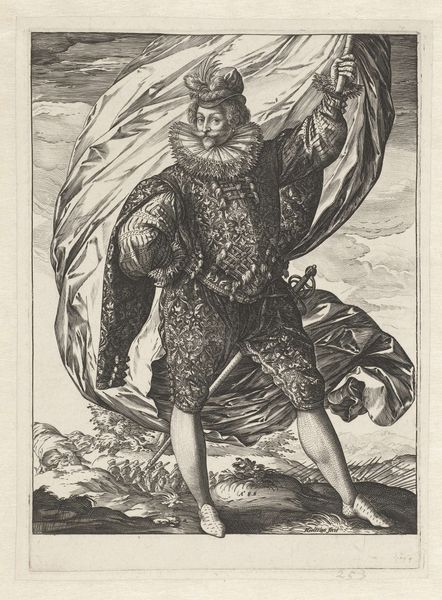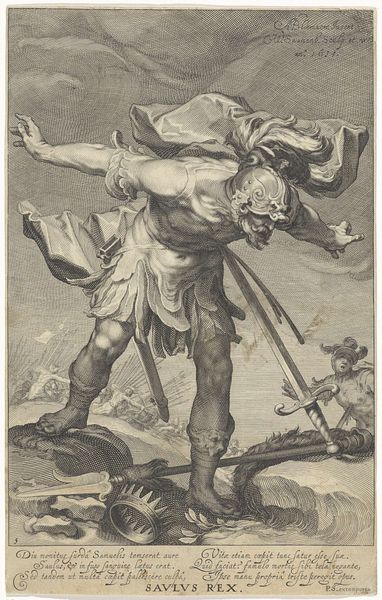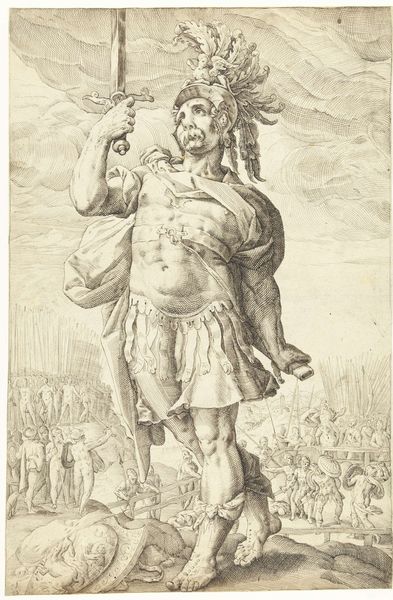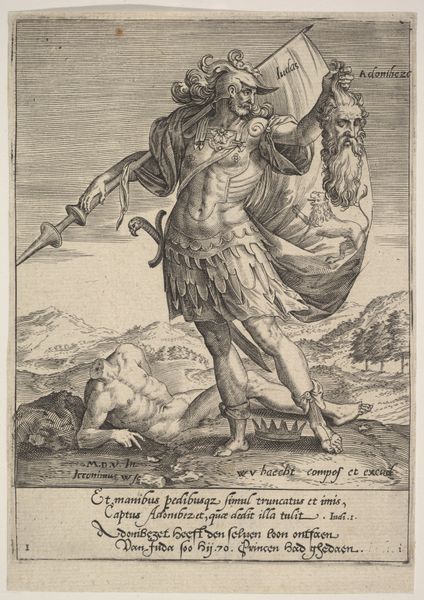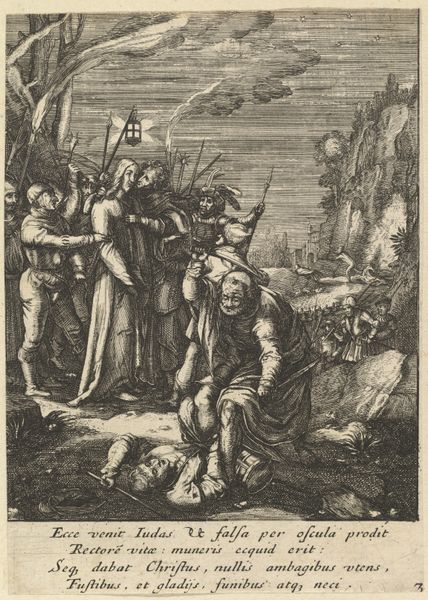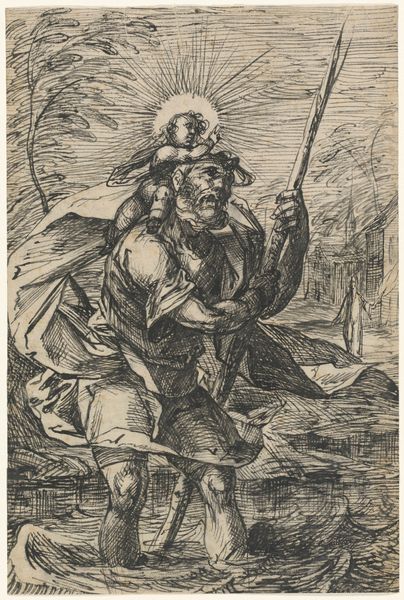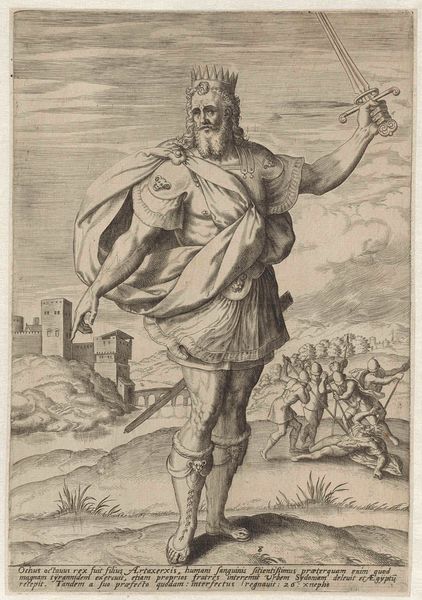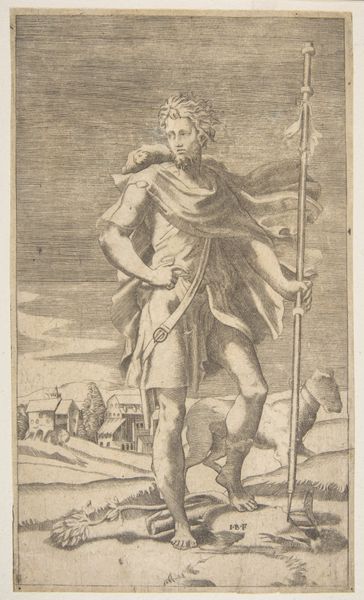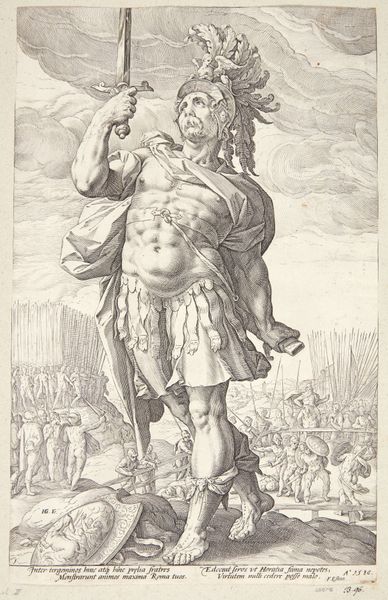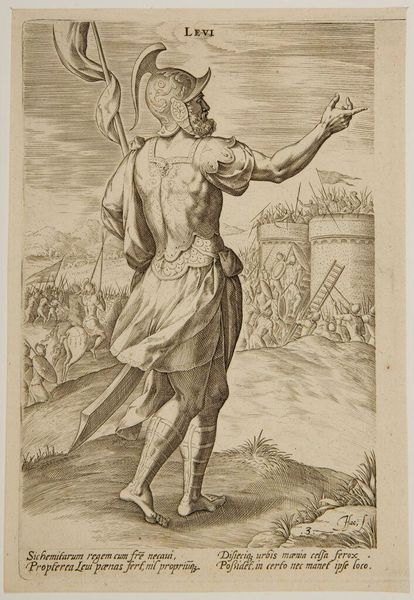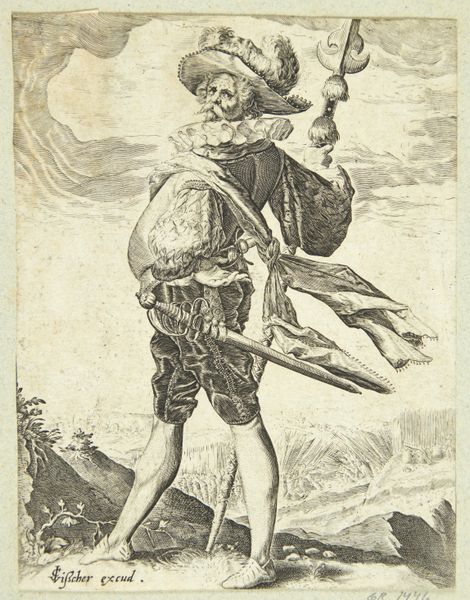
Achilles and Priam, in conversation outside of Troy 1639 - 1671
0:00
0:00
drawing, print, engraving
#
drawing
#
narrative-art
#
baroque
# print
#
figuration
#
history-painting
#
engraving
Dimensions: Sheet (Trimmed): 12 3/8 × 9 1/16 in. (31.4 × 23 cm)
Copyright: Public Domain
This print, depicting Achilles and Priam, was made in the 17th century by Lucas Vorsterman II. To create it, he would have used a technique called engraving, painstakingly cutting lines into a copper plate with a tool called a burin. Look closely, and you'll see that the image is built up from thousands of these tiny engraved lines. The varying thickness and density of the lines create different tones and textures. Consider how much labor was involved in this. Each line had to be carefully planned and executed to create this image. Engraving was a highly skilled craft, and prints like this were valued for their detail and precision. But beyond their aesthetic qualities, they also served an important social function, making images and stories accessible to a wider audience. It is through an understanding of these modes of production, that one can have a fuller appreciation for the ways in which an artwork has meaning.
Comments
No comments
Be the first to comment and join the conversation on the ultimate creative platform.
